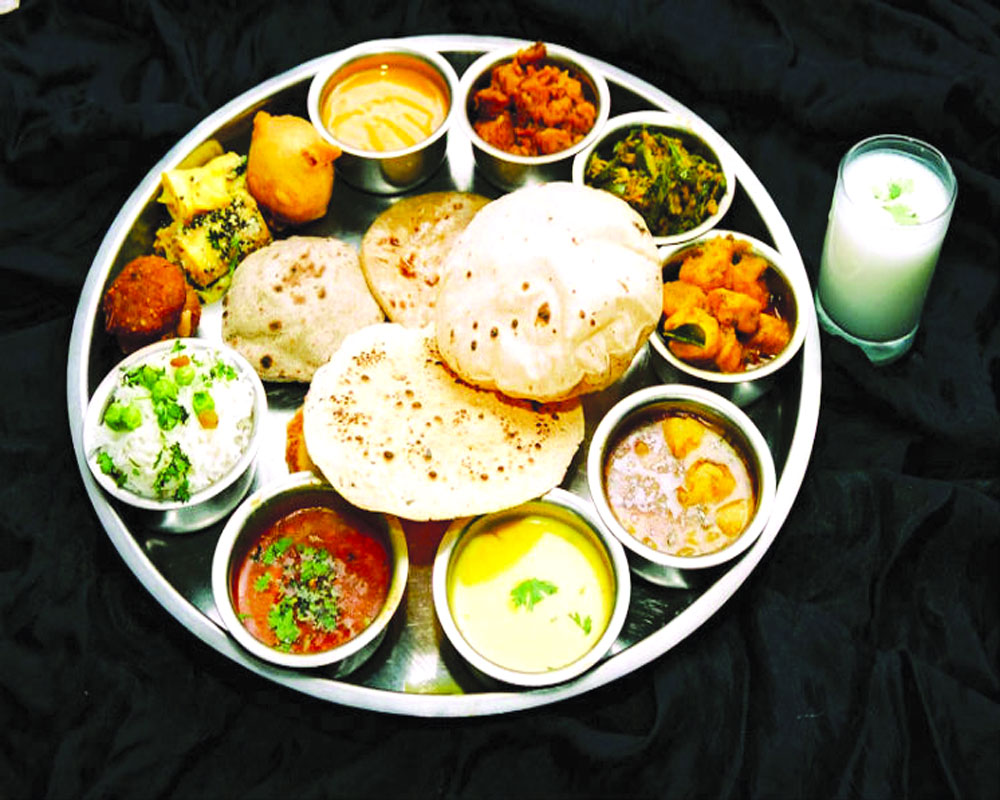Chef Sabyasachi Gorai lists the forgotten benefits of the traditional Indian meal system and how we can revive it
Everyone loves to go out and eat but amid the COVID-19 pandemic and health and government officials urging people to stay home as much as possible, we have been forced to eat home-cooked food every day. And during this time, while many waited impatiently for the unlock, many chose to bring out their inner chef and taste the joy of home-cooking. Social media videos and YouTube channels became the learning tool, teaching people how to prepare all kinds of quick and easy restaurant-styled recipes in their own kitchen. Well, social media is a testament to all those delicacies.
However, how many tried to adopt or cook meals the traditional way? For instance, a thali meal system is something that we should introduce into our daily lives. This time is also a good opportunity. A thali (plate) is a big round base that holds small bowls (also called dunas), carrying specified quantities of various food items. The first mention of dunas can traced back in the texts from the Vedic period, but the portions we see in today’s thalis have changed drastically. Well, most of it would find its roots in the establishment of new social structures and modern lifestyles.
The significance of this thali is that it offers the right amount of nutrients required to maintain a healthy body and lifestyle. It helps us ensure that we are consuming balanced meals. This situation of staying home has presented us with an opportunity to prepare and consume these balanced meals. A healthy diet can protect the human body against several diseases, especially non-communicable ones such as obesity, diabetes, cardiovascular diseases, some types of cancer and skeletal conditions. It also helps us maintain a healthy immune system, important to fight the fast-spreading viruses like COVID-19.
For decades, it has been our culture to eat together as a family. This was another advantage of the lockdown with all family members staying at home. Indian culture encourages consumption of wholesome meals and have also passed on several combo recipes to us. It lays great emphasis on portion control to avoid problems like obesity, experiencing the variety of flavour and textures and sharing of food with everyone. Indian thalis have hence been a rich diet meal that does not only take care of the tastebuds but also provides all the necessary nutrients. We should continue to carry our tasty and healthy food culture with us and use it in our daily lives.
Here are some of the tips to prepare a healthy and balanced Indian thali at home:
- Striking a balance in the proportions of carbohydrates, fats, proteins, vitamins, minerals, and water they consume, is important.
- Including these items in your daily meals is crucial to follow a balanced diet — fruits, vegetables, grains, proteins, dairy and oils. Fruits and vegetables are rich in several nutrients, especially vitamins and minerals. Dark, leafy greens such as spinach, cabbage, broccoli, and green beans are also highly-nutritious ingredients that should not be skipped.
- Consuming whole grains instead of refined grains since the latter lack the hull containing most of the grain’s nutrition. Adding proteins to your meals in the form of meats and beans will aid in muscle and brain growth.
- The breakfast should contain a combination of complex carbs, proteins, and fibre. Experiment with different kinds of omelettes, vegetable rich poha, upma or sandwich, stuffed parathas, idli/dosa/uttapam with chutney or sambar.
- For lunch, remember to fill your plate half with vegetables and fruits, one fourth with proteins and the remaining one-fourth with carbs. Simple meals can be tasty too, if cooked the right way. Mix vegetable khichdi or pulao or Rajma rice with buttermilk or curd, paneer wrap with boiled chana and lassi or pasta with paneer salad and curd are all great meals for a soul-filling healthy lunch. Non-vegetarians can opt for items like fish curry with rice and curd.
- The dinner should always be the lightest meal. Bisibele rice with curd, dal rice and vegetable or soup with pulao are the best choices to end your day with.
- Between these meals, one can have another round of fruits, a chana chaat or sprouts as a snack instead of caffeine-filled tea/coffee.
- Adding nutrient-rich ingredients like pepper, ginger, garlic, cumin, cloves, fenugreek seeds, turmeric to your everyday food regulates the healthy factor in the body. These spices carry chemical compounds which have anti-bacterial, anti-fungal, anti-microbial and anti-viral properties which help fight several kinds of infections.
- Hydrating beverages should not be missed out. Apart from drinking at least two litres of water every day, one can also consume healthy and tasty drinks like fruit juices, milk shakes, buttermilk, coconut water to beat dehydration.
- Other items which can be included are roasted chana, peanuts, makhana, chikkis, puffed rice, bajra, jowar, maize, ragi flour, wholegrain breads, wheat pizza bases and wheat pastas, tender coconut, green tea, olive oil, groundnut, soyabean and mustard oil in your kitchen pantry. These are some of the healthiest ingredients available in the local Indian markets.
Following a healthy Indian thali system can play an instrumental role in not only enhancing the quality of your health but can also uplift your mental well-being.
(The writer is the goodwill ambassador of MyThali programme.)


























